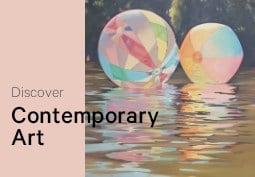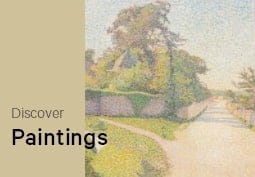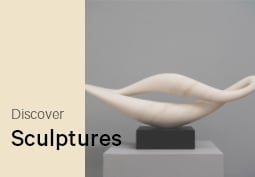Interviews
In Conversation With Leading Art Market Expert and Best-Selling Author Magnus Resch
Recently published by Phaidon, a new book by best-selling author and art market expert Magnus Resch provides brilliant guidance on art collecting and demystifies the current global art market through a data-driven approach. In ‘How to Collect Art’, both seasoned collectors and newcomers to the art market can find useful tips and insights.
Drawing from the largest research study conducted on the art market, his twenty years of experience in the art industry and case studies with insiders in the field, Magnus distilled the best practices in the process of collecting art. He reflects on popular topics such as responsible art buying and the significance of building diversified art collections, both personal and institutional ones.
We had the pleasure of asking Magnus a few questions about his interest in the economics of art, his view on inclusivity in the industry, misconceptions about collecting practices, and much more.
“Why should you buy art? I advocate for what I call “responsible buying,” which entails purchasing art that speaks to you on a personal level.”
Magnus Resch
Your resume reflects a diverse range of titles, from entrepreneur and published author to University Professor. Yet, the common threads seem to be Art and Economics. Could you elaborate on where your passion has originated and how you have become one of the leading experts in the economics of the art market?
I am passionate about making the art market more transparent to encourage greater participation in art buying. I pursue this goal across various avenues: as a teacher at Yale, I educate MBA students and cultivate them into a new generation of collectors; through my books, I aim to reach a wider audience and impart knowledge about the art world; in my entrepreneurial endeavors, I leverage technology to democratize the market. For instance, I developed an app that functioned like Shazam for art, simplifying the process of art identification, while @larrys_list, showcases some of the most intriguing collectors worldwide and has become one of the most watched Instagram accounts in the art world. Through these diverse efforts, I strive to empower individuals to engage with and appreciate art in new and meaningful ways.
In your book, you introduce the concept of “Holy Land”, indicating a series of institutions in specific geographical locations that have the power to validate an artist’s career, as opposed to their surrounding “island networks”, smaller entities that don’t make an actual impact in the art industry. Considering this narrative, can the contemporary art world be defined as a global industry?
Absolutely, the art world operates on a global scale, with artistic creation flourishing in every corner of the globe, even in the most remote locations. However, the market itself tends to be concentrated in major hubs like New York, London, and Hong Kong. This poses a dilemma for galleries: should they prioritize proximity to the supply of art or to the demand? In my experience, I always advise galleries to prioritize proximity to the demand side, as ultimately, they need to sell their artwork.
In your book, you advocate for greater diversity and inclusivity in the representation of artists. To what extent do you think the art industry reflects current political and social streams?
Current research indicates that female artists, members of the LGBTQ+ community, and artists of color are facing significant underrepresentation in the art market. They are not given equal opportunities in terms of exhibitions, prices, sales, and gallery representation when compared to their male white peers. The art market is characterized by systemic inequality, where a small number of mostly white male painters dominate the industry. A shift of this magnitude will likely span generations, but we are witnessing significant changes already, propelled by the efforts of collectors like Pamela J. Joyner, who wrote the foreword to my book, and artists and gallerists, many of whom have also contributed to my book.
Can you discuss any notable trends or shifts in the art market landscape that you’ve observed recently, and how does your book contribute to understanding and adapting to these changes?
The gap between the top players and the rest of the market is widening rapidly. Currently, just 20 artists account for over 50% of the revenue in the auction market for contemporary art. Essentially, we’re witnessing the emergence of two distinct art worlds: one dominated by a select few active players in what can be described as the “holy land,” where art is treated as an investment and stardom is cultivated, and the other comprising the remaining 99.9% of the market. My book delves into these two worlds and emphasizes the significant impact that new collectors can have by supporting artists from the broader market.
In your interactions with various stakeholders in the art world, what common misconceptions or myths about art collecting do you often encounter, and how does your book address or debunk these perceptions?
The most prevalent misconception in the art market is the belief that art is inherently a sound investment. While this may hold true for a select group of artists, it doesn’t necessarily reflect the broader market reality. As members of the art world, our primary objective should be to encourage art lovers to become art buyers. Why should you buy art? I advocate for what I call “responsible buying,” which entails purchasing art that speaks to you on a personal level. By doing so, you’re not only supporting the artist and the gallery but also contributing to the broader artistic community. Additionally, art has the power to inspire and offer new perspectives, enriching your life in meaningful ways. Ultimately, art can bring joy and fulfillment, making it a worthwhile endeavor. So go ahead, buy art and let it enrich your life!
Relevant sources to learn more
More articles from Artland Magazine you may like:
David Shrigley: “Do What You Want to Do, Try Not to Get Bored” – The British artist on his latest book, the joys of self-publishing and why comedy is so important
The Best Art Books of 2023
The Year Ahead: the Art World in 2024 – Major Fairs, Trends & Exhibitions
Other relevant sources:
Buy ‘How to Collect Art’ by Magnus Resch





